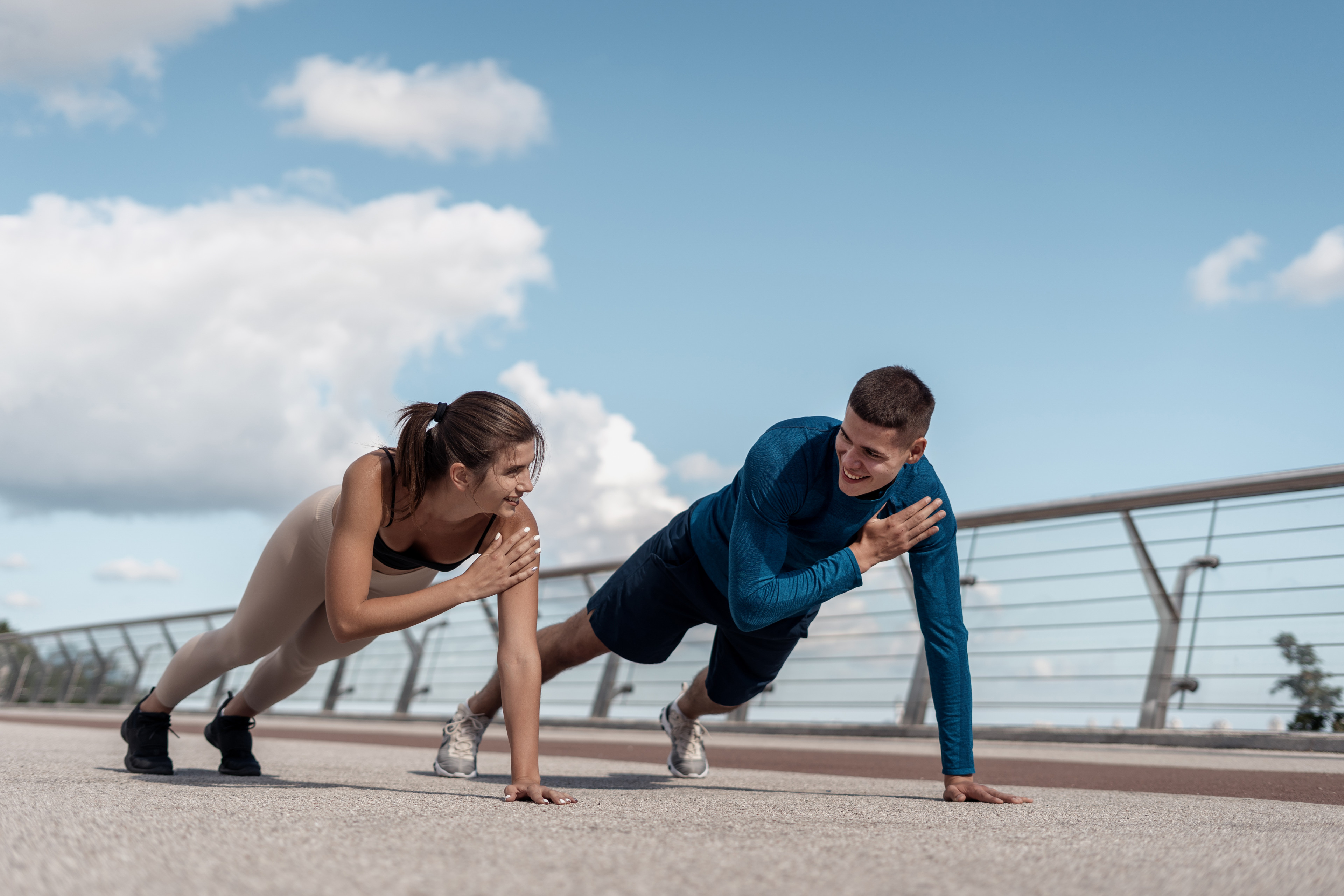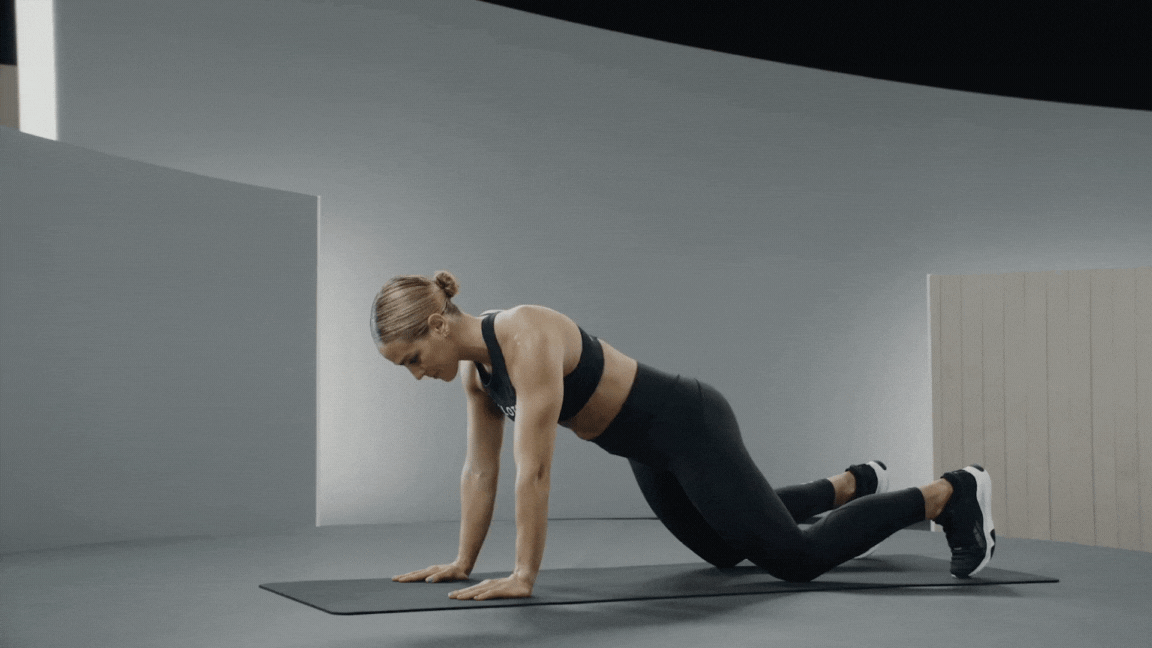
brizmaker/iStock/Getty Images Plus via Getty Images
This Plank Variation Challenges Your Entire Body
Including your arms, abs, and lower body.
By Kells McPhillips•
What Are Shoulder Taps?
What Muscles Do Shoulder Taps Work?
Here’s How to Do Shoulder Taps
Shoulder Taps: Modifications and Variations
How to Maintain Your Form While Doing Shoulder Taps
How to Add Shoulder Taps to Your Workout Routine
At some point in the (unofficial) history of fitness, someone decided that planks just weren’t challenging enough. They invented plank variations such as side planks to challenge your obliques, and the wild idea of driving your knees into your chest led to mountain climbers. For shoulder taps, they followed the same line of thinking: What if we took a plank and added a little extra spice? Just like that, a really tough workout move was born.
All joking aside, this brutal (yet effective) workout move deserves a place in any fitness routine. Shoulder taps will light up your core, challenge your delts and triceps, and even add a little fire to your arms and legs. Keep scrolling to learn everything you need to know on this workout move, including how to modify it and how to incorporate it into your next workout.
What Are Shoulder Taps?
“Shoulder taps are a bodyweight exercise that involves tapping alternate shoulders while maintaining a plank position, challenging your core stability and shoulder strength,” explains Peloton instructor Jermaine Johnson. You can file this move away into your stable of core moves, but really, shoulder taps work your entire body from head to toe. Whether you’re a runner aiming to build core stability, or a climber who needs to balance out push and pull strength, this exercise is a worthy addition to your fitness Rolodex.
What Muscles Do Shoulder Taps Work?
If you perform the exercise correctly, more than just your core will light up. Shoulder taps are technically a full body workout, but they specifically work the deltoids or shoulder muscles, triceps, quads, glutes, and (of course) the core. Because you’re holding your midsection steady throughout this move, you’ll feel the majority of the sensation right smack-dab behind your belly button in your transverse abdominis (“abs”) and the rectus abdominis (the deepest part of the abs that’s slung between the ribs and the pelvis).
Here’s How to Do Shoulder Taps
Ready to add this full body move to your next workout? Great. Ahead, Jermaine provides all the steps you need to perform this move safely and effectively.

1. Start in in a plank position. Your hands should be directly underneath your shoulders, and your back should look like, well, a plank of wood. Tip: By engaging your core and tucking your pelvis just slightly, you should be able to bring your hips to the same height as your shoulders.
2. Wrap your triceps backward so that your elbows face your knees, and keep your head in the same line as your spine so you don’t strain your neck and shoulders.
3. Start your shoulder taps by lifting one hand off the ground and tapping the opposite shoulder. Then return to start and repeat in a controlled and steady pace.
As you tap your shoulders, try to keep the rest of your body absolutely still. Specifically, make sure your hips aren’t swaying from side to side or dipping toward the ground. Notice if you start to shift the majority of your weight into one leg and try to redistribute that weight equally on both sides.
4. Once you’ve completed your reps, return to plank position and carefully lower your knees to the ground. Check in with your body. If your lower back feels tender or your shoulders are hurting, consider modifying your next set of taps until your core and upper body feel ready for something more challenging.
Shoulder Taps: Modifications and Variations
It’s easy to dial up (or dial down) the intensity of your shoulder taps, says Jermaine. A few options for your consideration:
How to Make Shoulder Taps More Approachable
“Perform the exercise from a plank position on your knees, reducing the load on your core,” says Jermaine. To do this modification, come to your hands and knees, ensuring that your shoulders are directly above your wrists and your knees line up right below your hips.
Another option? Come into plank pose and skip the shoulder taps (for now). Once you gain more core strength, you can start experimenting with the full version of this move.
How to Make Shoulder Taps More Challenging
For a spicier variation, add some height. “Place your hands on an elevated surface, a bench or step, to increase the range of motion and difficulty,” says Jermaine. You can level up the workout even more by flipping a balance ball upside down and placing your hands on the hard plastic side, then complete the following steps as usual. However, note that this is a very advanced move—and should only be attempted if the other variations feel too easy.
How to Maintain Your Form While Doing Shoulder Taps
As with all strength training moves, form is key to reaping all the benefits of this movement. “Keep your body in a straight line from head to feet to ensure proper plank alignment, minimize hip rotation by engaging your core and glutes, control the movement to avoid swaying, and focus on tapping the shoulder without shifting your weight too much from side to side,” says Jermaine.
If you find that your form is breaking down, simplify the movement. “Listen to your body and progress gradually to more challenging variations as your strength and stability improve,” says Jermaine.
How to Add Shoulder Taps to Your Workout Routine
Shoulder taps are a wonderful workout move to have in your back pocket. Add them to the mix when you’re warming up, moving through a core circuit, or tacking on a burnout at the end of your workout.
In time, you’ll see the results this exercise has to offer; two of those benefits include better shoulder mobility and a stronger core, according to Jermaine. Whether you spend most of your time on the Peloton Bike+, Peloton Tread+, or in your at-home weight room, you’ll find that shoulder taps slot effortlessly into your workouts and help you build that all-important core strength.
Level up your inbox.
Subscribe for a weekly dose of fitness, plus the latest promos, launches, and events.



